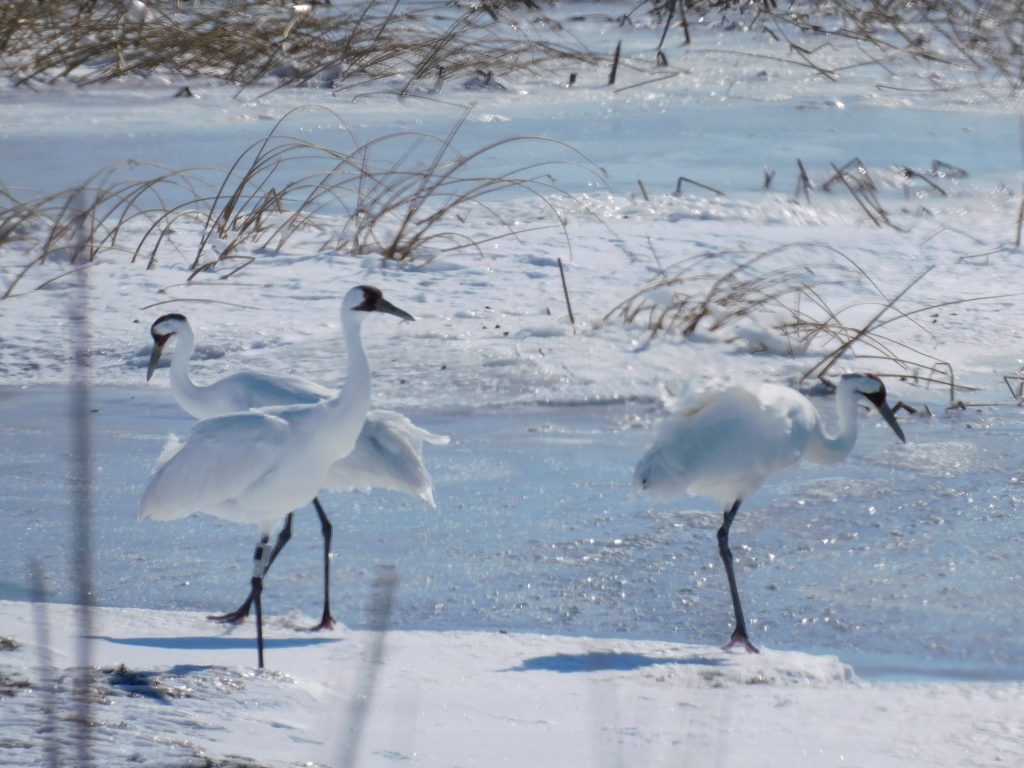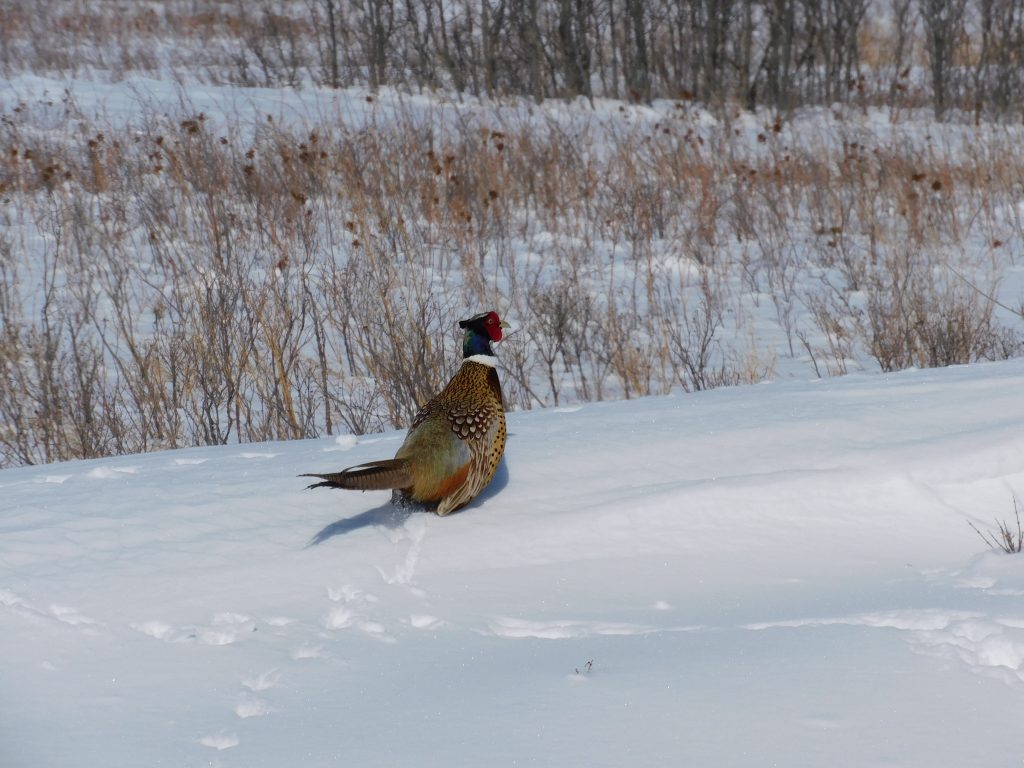

MINOT — Lake Darling hosted some rare visitors this past week, a trio of whooping cranes that apparently had their northern migration rudely interrupted by one of the largest blizzards to ever strike the region.
The cranes were sharing shallow water and shoreline with Canada geese, snow geese, mallards, shovelers, pintails, and a few gulls. One of the large, endangered birds was wearing an identification band on its leg. Whooping cranes that use the Central Flyway generally spend their winters on the Texas coast, flying north each spring to nest and raise their young.
It is not known if the Lake Darling whoopers only made it as far as North Dakota when the storm hit, or if they were further north and were attempting to get south of the storm’s snowline. Whoopers find shallow sloughs ideal for feeding on insects, minnows, snails, and other aquatic creatures. If necessary, they will also feed on grain remaining in fields.
The state’s most popular gamebird, the ring-necked pheasant, is also one that is quite vulnerable to heavy snowfall. Pheasants seek cover during adverse weather and sometimes become so drifted over with snow that they cannot escape their sanctuary. Finding feed is also difficult for pheasants when the snow is deep.
Compounding the problem during the recent storm is the fact that the ground was warm when the snowfall occurred, causing snow to melt into slush before freezing due to cold temperatures. Pheasants will scratch the ground to find food but cannot scratch through a layer of ice.
How the colorful birds fared in the storm is difficult to say, but initial reports are that fewer birds are being seen than prior to the blizzard. Hungarian partridge, another introduced species, tends to withstand adverse weather better than pheasants but are still quite vulnerable to major storm. Our hardiest upland game, native sharp-tailed grouse, are better suited to deal with winter conditions.

Waterfowl, ducks and geese, were well into their spring migration when the storm hit. When the wind subsided and people were able to begin the big dig out, they also saw and heard thousands of geese moving across the sky, mostly snow geese. The white birds were likely seeking to get below the snowline, or at least find an open area where they could rest and find a food source not covered by two to three feet of snow.
Canada geese, early migrants, are known for their ability to withstand harsh weather. Many Canada geese were seen sitting on snowbanks or on ice following the storm, conserving energy while waiting for warmer weather.
